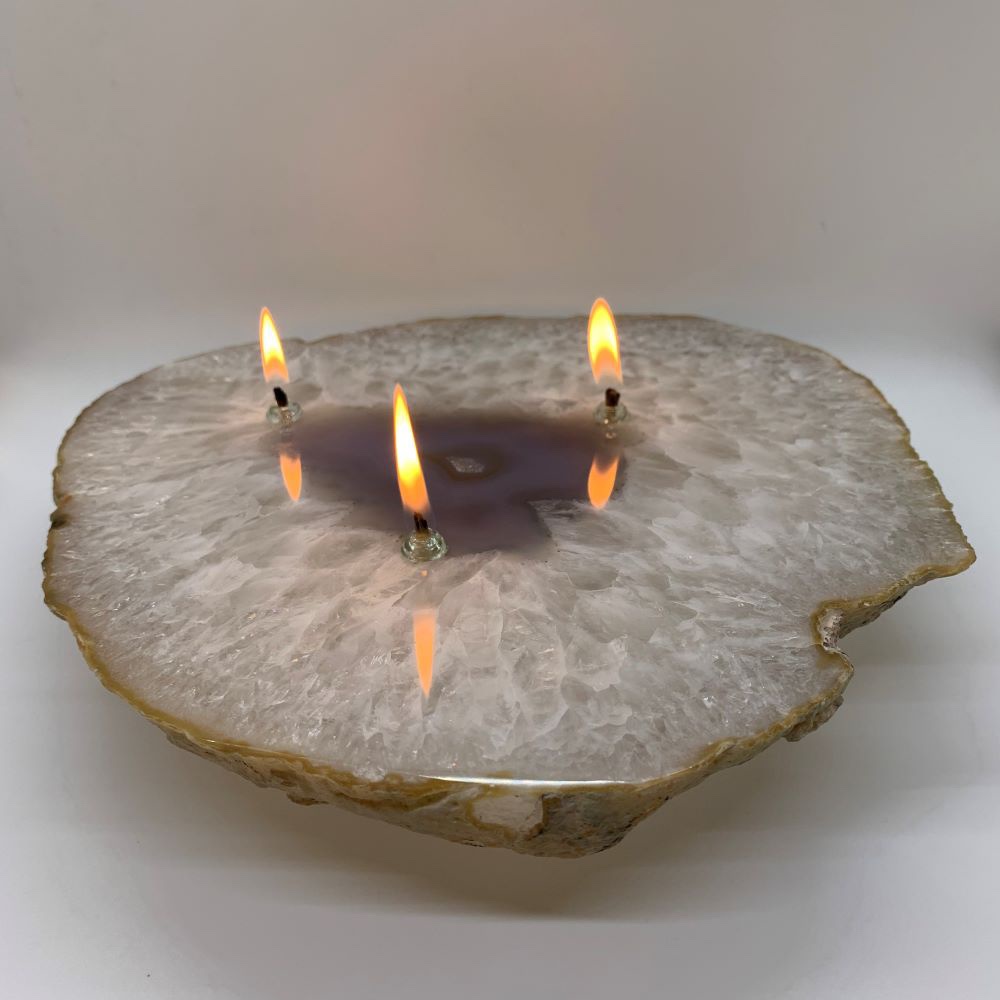
Found in the Ground Candles takes pride in the quality and beauty of each of our handmade candles. But how do we ensure that the candle that now sits in your living room is unique and well made enough to be a Found in the Ground Candle? Our process takes several steps, starting with the individual stone.
To start, each one of our candles comes from an individually selected rock or fossil. No place is too big or too small to find a candle rock. Sometimes, we get them off the internet. Sometimes, we go out into nature (legally) and find rocks out in the world around us. Sometimes, and this is my personal favorite, the rocks jump out to us on our travels around the southwest. One time, we even stopped on a road cut high up above the town of Jerome in order to find beautiful rocks to create candles. I was lucky I don’t have a fear of heights!
Once our adventures are complete, we bring back the rocks to our workshop. Though we have the highest quality flat rock oil candles on the market, our process still takes place in a small, one person workshop. Though it isn’t much, it is all we need to create our candles.
The first step to creating a Found in the Ground flat rock oil candle is to drill a hole in the candle. Our staff carefully selects the placement of the drilling for both aesthetic and balance purposes. Next, we put the rock under our drill press. The drill press is helpful because it drills straight down, with no risk of us shaking a drill and breaking a beautiful agate. In order to ensure the rocks, especially the agates, don’t break during the process of drilling, we have a special process that we perform during drilling. What is that process, you may ask? Well, consider that a trade secret.
So now, we have a rock with a hole in it. Now, you have to make a candle out of it. To do that, we cement a reservoir to the bottom of the rock. At this point, your rock is almost a candle! All you need to do now is add a wick and light it.
The Found in the Ground process creates the most unique and vibrant candles on the internet. Though there are many imitation candles, ours are the only ones that use the Found in the Ground process to make a special part of your decor.








